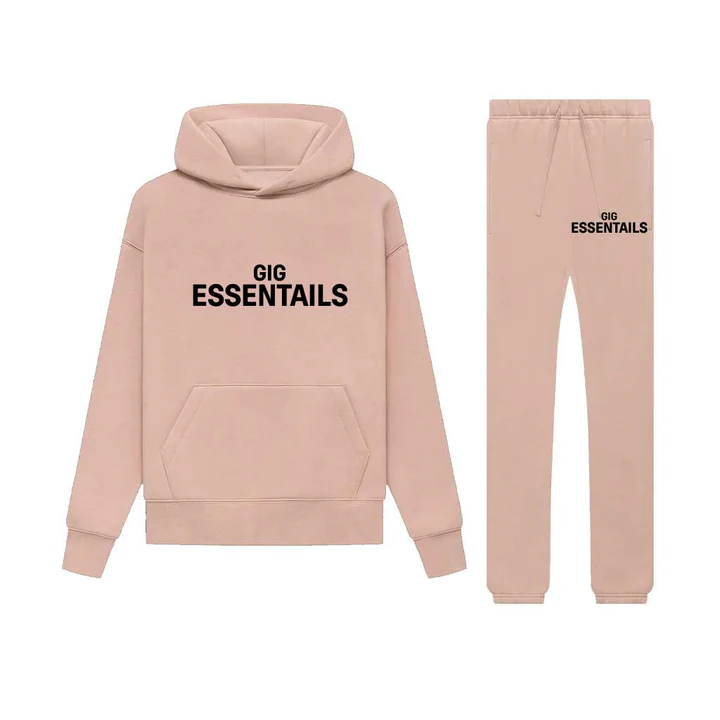Creating a versatile and functional wardrobe can feel overwhelming, especially with ever-changing fashion trends. However, focusing on essential clothing can simplify this process, Essentials providing you with a strong foundation for any outfit. Essential clothing consists of timeless pieces that can be easily mixed and matched, allowing for endless styling possibilities. This article explores the concept of essential clothing, highlights key pieces to include in your wardrobe, and offers tips for building a collection that suits your lifestyle.
Understanding Essential Clothing
Essential clothing refers to the foundational items that every person should have in their wardrobe. Unlike fleeting fashion trends, these pieces are timeless, offering both versatility and longevity. Essentials typically feature neutral colors, simple designs, and high-quality materials that withstand the test of time. The goal is to create a collection of items that you can easily dress up or down, making it easy to put together outfits for various occasions.
Key Pieces of Essential Clothing
To build a well-rounded wardrobe, consider incorporating the following key pieces:
1. Basic Tees
A few well-fitted, solid-color t-shirts are crucial for layering or wearing alone. Essentials Tracksuit Look for neutral shades like white, black, gray, and navy. These basic tees can be paired with almost anything and serve as the foundation for countless outfits.
2. Classic Button-Down Shirts
Versatile and polished, button-down shirts can be dressed up or down. Opt for white or light blue for maximum versatility. These shirts can be worn with jeans for a casual look or paired with tailored trousers for a more professional appearance.
3. Tailored Pants
A good pair of tailored trousers or chinos is essential for a polished look. Choose neutral colors that can easily pair with various tops. Tailored pants can elevate any outfit, making them suitable for work or formal occasions.
4. Jeans
A classic pair of jeans is a staple in any wardrobe. Consider a medium wash for a timeless look that complements a wide range of styles. Ensure they fit well and suit your body type for maximum comfort and style.
5. Layering Pieces
Lightweight cardigans, denim jackets, or blazers are great for layering. They add dimension to your outfit while providing warmth. Choose neutral colors or simple patterns that can easily complement your other essentials.
6. The Little Black Dress (LBD)
For women, a little black dress is an essential piece that can be styled for both casual and formal events. The versatility of the LBD allows it to be accessorized differently to suit any occasion, making it a wardrobe staple.
7. Comfortable Footwear
A pair of versatile shoes, such as white sneakers, loafers, or ankle boots, can complete any outfit while ensuring comfort. Opt for styles that can transition from day to night and work well with various clothing pieces.
8. Outerwear
A classic trench coat or tailored overcoat is essential for colder weather. Choose a style that flatters your body shape and complements your wardrobe. Quality outerwear not only keeps you warm but also adds sophistication to your look.
Choosing Quality Over Quantity
When building your essential clothing collection, it’s crucial to focus on quality rather than quantity. Investing in well-made pieces means they will last longer and withstand wear and tear. While you may spend more upfront, quality items save you money in the long run as you won’t need to replace them frequently.
Tips for Identifying Quality Clothing
- Check the Fabric: Natural fibers like cotton, wool, and linen typically offer better durability and comfort than synthetic materials.
- Examine the Stitching: Look for neat, even stitching without loose threads. Double stitching can also indicate better durability.
- Feel the Weight: Higher-quality fabrics often have a more substantial feel, indicating that they are less likely to wear out quickly.
- Look for Details: Pay attention to small details, such as reinforced seams, high-quality zippers, and sturdy buttons, which often indicate a well-made piece.
Color Palette and Versatility
When selecting essential clothing, stick to a cohesive color palette. Neutrals like black, white, gray, beige, and navy provide a versatile foundation, allowing you to mix and match easily. Once you have your basics, you can incorporate statement pieces or trendy items to add personality to your wardrobe without overwhelming it.
Building a Color Palette
- Base Colors: Start with a few base colors that suit your skin tone and can serve as the foundation of your wardrobe.
- Accent Colors: Incorporate one or two accent colors that you love. These can be used for statement pieces or accessories to add a pop of color.
- Seasonal Variations: Consider adding seasonal colors to your wardrobe to keep your looks fresh without straying too far from your essentials.
Building a Capsule Wardrobe
Essential clothing often aligns with the concept of a capsule wardrobe, which focuses on curating a small, interchangeable collection of pieces. A capsule wardrobe typically includes 20-30 items, including tops, bottoms, outerwear, and shoes, designed to simplify dressing and minimize clutter.
Benefits of a Capsule Wardrobe
- Less Decision Fatigue: With fewer items to choose from, getting dressed becomes easier and quicker.
- Versatility: Each piece is selected for its ability to work with multiple outfits, allowing for greater creativity with fewer items.
- Sustainable Fashion: A capsule wardrobe encourages mindful purchasing, reducing waste and promoting sustainability.
Styling Essential Clothing
The beauty of essential clothing lies in its versatility. Here are some styling tips to make the most of your essentials:
Layering
Use layering to create depth in your outfits. A basic tee under a blazer or a cardigan can transition an outfit from casual to polished. Mixing textures and lengths can add visual interest.
Accessorizing
Elevate your essentials with accessories. A statement necklace, scarf, or belt can transform a simple outfit into something special. Accessories allow you to express your personality while keeping your essentials as the focal point.
Mixing Textures
Combine different textures to add interest to your outfits. For example, pairing a knit sweater with tailored trousers or a silk blouse with denim can create a stylish contrast.
Maintaining Your Essentials
To keep your essential clothing in good condition, follow these care tips:
- Washing: Follow care labels and wash items according to their specific needs. Avoid over-washing to preserve fabric quality.
- Storage: Store clothing properly by folding or hanging them appropriately. Use garment bags for delicate items to protect them from dust and damage.
- Repairing: Address minor damages, such as loose buttons or small tears, promptly to extend the life of your clothing.
Conclusion: The Importance of Essential Clothing
Essential clothing is the cornerstone of a functional and stylish wardrobe. By focusing on quality, versatility, and timelessness, you can create a collection of pieces that not only reflect your personal style but also make dressing easier and more enjoyable. Investing in essential clothing ensures you’re prepared for any occasion, providing a solid foundation for your fashion journey. A well-curated wardrobe filled with essentials will serve you well, making it easy to express your unique style while remaining confident and comfortable.
FAQs
Q1: What are essential clothing items?
Essential clothing items are foundational pieces in a wardrobe that are versatile, timeless, and of high quality, such as basic tees, jeans, tailored pants, and classic outerwear.
Q2: How do I choose essential clothing?
Choose essential clothing based on quality, fit, and versatility. Opt for neutral colors and classic styles that can easily mix and match with other items in your wardrobe.
Q3: What is a capsule wardrobe?
A capsule wardrobe is a curated collection of essential clothing items, typically consisting of 20-30 interchangeable pieces, designed to simplify dressing and minimize clutter.
Q4: How can I maintain my essential clothing?
Maintain your essential clothing by following care labels, washing items appropriately, storing them correctly, and promptly repairing any minor damages.









